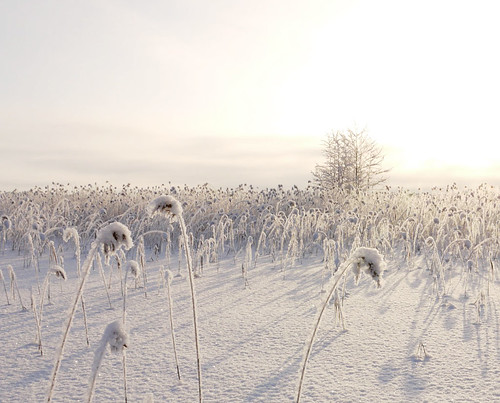I am pretty sure I failed at that.
So (being the brooder hen I am) I thought about it on the way home (motorcycles are good transport for that) and decided that I'd focused (gosh yes, that was a pun) on the technical and missed seeing the vision.
Can't see the wood for the trees so to speak.
So I thought I'd go back to one of my old favorite images and put a little time into how I saw it and how I 'visualised it' as an image.
I took this image with 4x5 inch sheet film using my Toho camera. I was walking along through the rain forest at Lamington National Park and came across this tumbled down rotting old "Strangler Fig" covered in moss. I loved the texture of the moss and wanted to visualise it as a rumbling brook of moss.
I picked my 4x5 for the shot so that I could control focus exactly where I wanted it (along the log) and not have everything else in focus. I used my digital for a quick light meter check to determine the camera exposure settings (as I have long held that digital cameras make the best light meters) and then by the way also have a sort of reference of the shot.
This is the 'digital' reference with no attempt made to correct the colours or richen it up. As it happens I didn't need to do that either with the film image as Provia III is rich enough as it is :-)
As you can see the image looks totally different from more or less the same location (the digital was taken just to the side of the film cameras lens).
But it the composition, the sence of the elements of the image and the focus (like its completely in focus) which makes this shot look totally different to the above image.
Now I could have just taken a heap of shots and picked the best, and with digital that's what people often do. But with large format film (at $10 a shot) you tend not to do that. It is knowing how to see what the camera will see which will save you a lot of time an money.
On another occasion I've done something similar on another shot. the following image was taken with my digital camera (an "SLR" for those who think that means something important). Digital doesn't like stark contrasts...

well here is the resulting vision which I wanted to attain where I could use the big camera to control focus.

Please do click on the image and load a bigger view. You can see more clearly that the focus is different (as well as here seeing that film handled the sky and sun better. That shot has a blog article about it already, so if you're interested that is over here.
So my point is that to take good photographs (be that whatever pleases you), you have to learn to develop your creative vision. To see in your mind what the camera will see and create an image which when people see it they like it.
Cos what you see and what an image looks like are often different.
Hope you got something out of this.
I hope that 2013 is both a happy and a creative year for you and for me, and I hope that Anita comes with me on as many of my trips into the wild as possible









.jpg)



3 comments:
Dang, you just reminded me I need to get one of those tilt adapters!
Stunning image!
Good point. Dynamic range is still better with film. We see it every time a TV show has an interior shot and we are also able to see out the window at the same time? Exposure is either perfect for one and not the other or more often, bad for both!
The old Kodak instructions under the sunny 11 rule, were to get your victims to squint into the sun and gently trip the shutter! Anything to minimize the contrast in the shot.
The way sensors are developing it will be cured in a few more generations though?
I was thinking about this after taking long exposures on NYE - photography is about what the camera will capture, rather than what you're seeing.
I learned photography shooting black and white, so it was quite bluntly obvious that the result was not what I saw... but it's still the same thing now I have a dSLR.
Even just snapping a shot crops the image to a certain size and shape, which is entirely different from what the eye perceived... and that's before you get into questions of exposure, post processing/photoshopping, etc.
Post a Comment